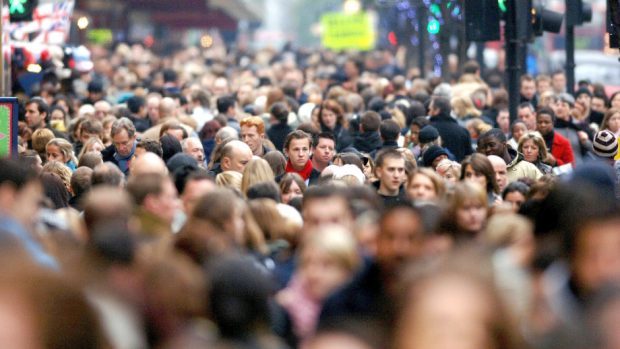New figures have revealed that the population of the Highlands is soaring – with more than an 1,000 extra people moving to the area each year.
Almost 26,000 people – the equivalent of an Elgin or Arbroath size of town – have been added to the region’s once dwindling population in the last 15 years.
The boost has been triggered by thousands of people migrating north, including in excess of 10,000 more residents settling in the Highland Council area than moved away in last decade alone.
Civic and business leaders hailed the success last night as “very significant” and “good news for the Highlands”.
But fears were raised after it emerged that the population of Argyll and Bute had declined by 4.12% over the last decade, the highest drop in Scotland, while the Western Isles also decreased by 0.6%.
And there were concerns last night that Brexit could undermine years of progress in the region and send the population tumbling.
Official statistics published yesterday show that the population of the Highland Council area was 234,770 by the middle of 2016.
It represents a 6.3% rise since 2006 – which is higher than the Scottish average of 5.3% – and the Highland figure is up by 12.3% on 2001.
The rise was recorded despite deaths outstripping births in the region by 395 in the last decade.
A net total of 10,427 people were said to have moved to the area in the period, the majority from within Scotland or the rest of the UK.
Highland Council leader Margaret Davidson was delighted by the figures, although she believed the rise would be concentrated in the Inverness, Easter Ross and Lochaber areas.
“That’s a lot. It’s encouraging. It’s certainly good news for the Highlands,” she said.
“The difficulty is that I suspect a lot of it will be in the Fort William and the Inner Moray Firth area, and less in Caithness and north-west Sutherland. I’d prefer to spread it out a bit.
“And my biggest fear about Brexit that we might wake up in five years and find our population has gone backwards.”
Kate Forbes, MSP for Skye, Lochaber and Badenoch, said: “The significance of the population boost is that greater density in rural areas makes local services – private and public – more sustainable in the long run.
“It is of course vital that government supports scattered communities in the Highlands, but we know that more people will mean there are more children in rural schools, small business are more profitable and recruitment of teachers and nurses and doctors is easier.
“There’s further to go but these new figures are testament to the hard work of those who strive to put the Highlands on a strong economic and social footing.”
Orkney also recorded an above average 7.4% rise in population in the last decade, adding 1,510 people in the period, while Shetland went up by 990 people, or 4.5%.
However, the Western Isles has 160 fewer people than in 2006, a decline of 0.6%, and while Argyll and Bute increased by 0.3% last year, it has lost 3,740 residents in the last decade, a drop of 4.1%.
Mid Argyll Chamber of Commerce secretary Jane MacLeod said: “Depopulation is a major issue, it’s our main issue. We’ve got an aging and declining population and we need government money. I think it’s a particular problem on the smaller islands.
“The Scottish Government do well at the moment on providing funds for affordable housing but we need more money spent on roads and ferries.
“We also need to encourage more students into coming to the area.”
A spokesman for Highlands and Islands Enterprise said the rise last year in Argyll and Bute was significant, however.
“We welcome the continued increases in the region as a whole, notably Highland, Moray and Orkney which over 10 years have experienced higher than average increases,” he said.
“It is particularly encouraging to see modest growth in Argyll and Bute over the past year, following a longer period of decline.
“Clearly there are challenges facing parts of the region, particularly the Western Isles, where there has been decline.
“That said, we have been able to support many projects that will over time help address the issue and strengthen the area’s community resilience.”
Across Scotland, the figures show that the nation’s population has risen from 5.06million in 2000 to an estimated 5,404,700 by the end of June 2016 – the largest number ever.










